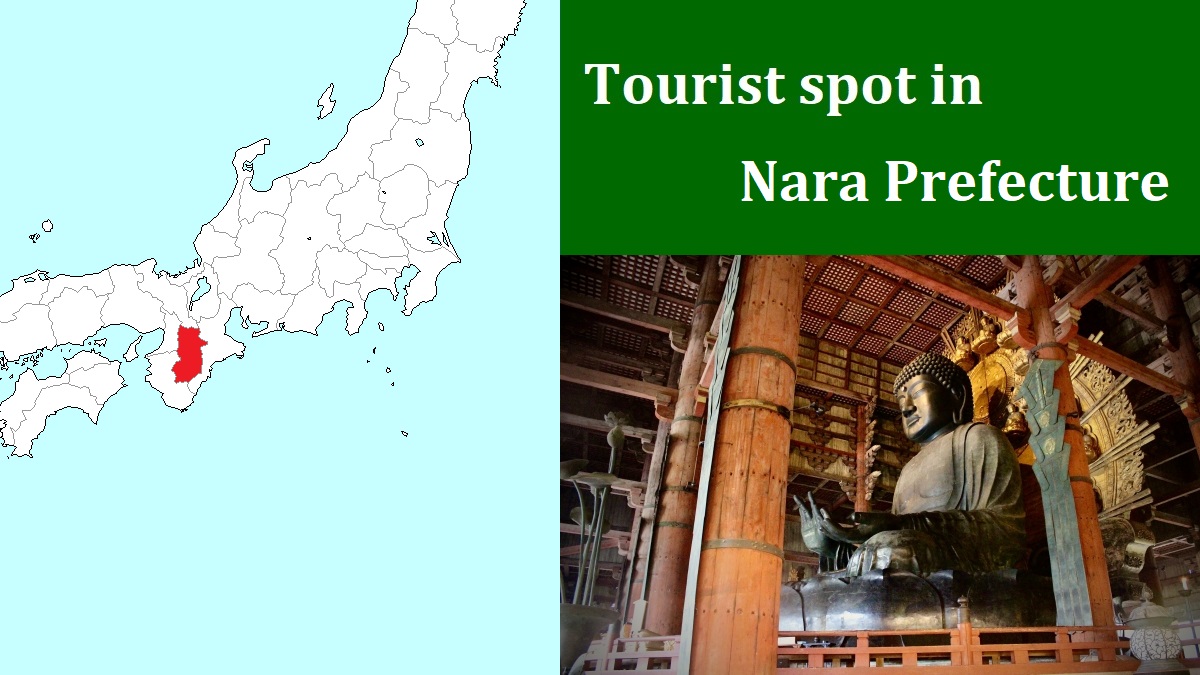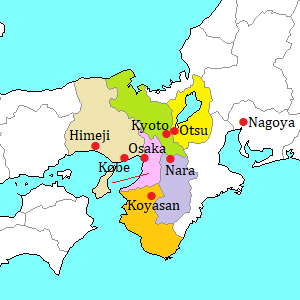Todaiji temple [東大寺]
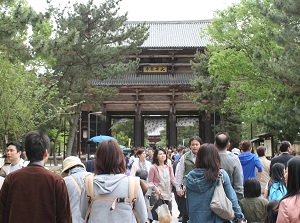
Nandaimon of Todaiji
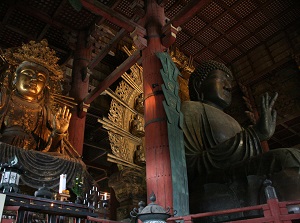
Daibutsu and the other statue in Todaiji
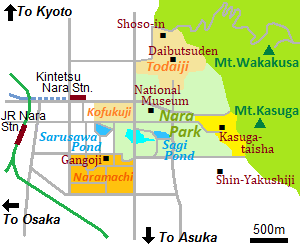
Todaiji is the head temple of Kegon Buddhism which is the transmission of the Huayan school of Chinese Buddhism.
"O" in the word is pronounced long, so it is read as "Tôdaiji".
It is located in the north part of Nara Park and at the foot of Wakakusayama (Mount Wakakusa).
And it is located about 2.5 km east-northeast of JR Nara station or about 1.5 km east-northeast of Kintetsu Nara station.
This temple is one of 9 constructions of "Historic Monuments of Ancient Nara" designated as a World Heritage Site.
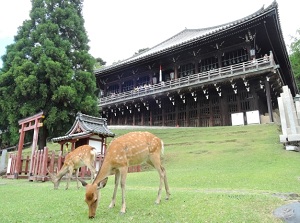
Nigatsudo of Todaiji
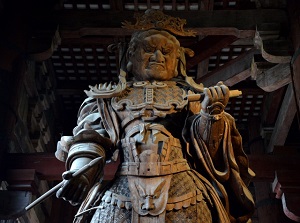
Komokuten statue in Todaiji
In the early 8th century, here was a temple named Konshuji.
In 742, this temple was upgraded to the provincial temple in this area.
Emperor Shomu (701-756) valued this temple, and he enlarged it.
And he gave the name "Todaiji" to this temple.
He decided to construct a Great Buddha statue in 743.
Difficult construction of the huge statue was started in 747.
It took over two years to complete.
The consecration ceremony was held in 752, then the constraction of the temple for the Great Buddha finished in 758.
But, the expenditure from national treasury for the temple and Great Buddha was too much, so it is said that the government had fallen into serious financial difficulty.
Todaiji was destroyed by fire in civil wars in 1181 and 1567.
The last rebuilding was from the end of the 17th century to the early 18th century.
But several destroyed buildings were not rebuilt.
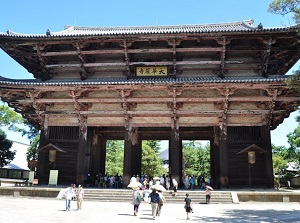
Nandaimon of Todaiji
Photo by Railstation.net
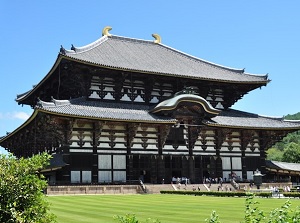
Daibutsuden of Todaiji
Photo by Railstation.net
The precinct of this temple is about 1 km from east to west and about 0.8 km from north to south.
There is Nandaimon gate (南大門) at the south edge, and it is the main gate.
It was rebuilt in 1199.
It is 25 meters high, and a pair of large wooden statues of guardian stand on the both side of the gate.
This gate and the statues are designated as national treasures.
About 400 meters north of Nandaimon, there is Kondo (金堂) housing Great Buddha.
Great Buddha is called Daibutsu (大仏) in Japanese, so Kondo is also called Daibutsuden (大仏殿).
Daibutsuden was rebuilt in 1709.
The height is 46.8 meters, the width is 57 meters, and the depth is 50.5 meters.
It is the largest ancient wooden building in the world.
But it is said that the size is three quarters of the original temple.
It is designated as a national treasure.
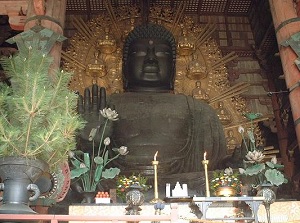
Daibutsu of Todaiji
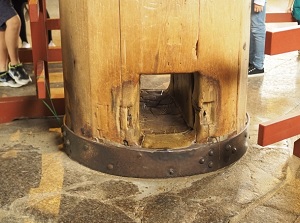
Hole as large as nostril of Daibutsu
In Daibutsuden, there are Daibutsu and some other wooden Buddha statues.
This Daibutsu is very famous, and is the symbol of Todaiji.
As above, it was completed in 758.
The last repairing the damage by fire was done in 1691.
This big statue was made of copper, and the height is 14.7 meters.
To create this statue, it is said that many lives were lost by various accidents by melting copper or mercury poisoning.
There is a hole through a wooden piller in Daibutsuden.
It is the same size as a nostril of Daibutsu statue.
If you can pass through the hole, it is said that you will be happy.
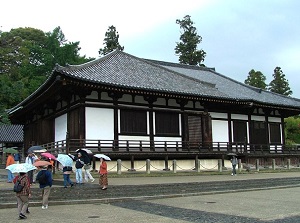
Sangatsudo of Todaiji
Photo by Railstation.net
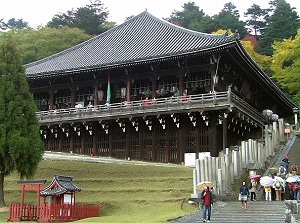
Nigatsudo of Todaiji
Photo by Railstation.net
About 400 meters east of Daibutsuden, there are Sangatsudo (三月堂) and Nigatsudo (二月堂).
Sangatsudo is one of the original buildings built in the 740s, and the formal name is Hokkedo (法華堂).
14 wooden Buddha statues are enshrined.
Nigatsudo was rebuilt in 1667.
"Nigatsu" means "February", and Omizutori Festival is held in February in the lunar calendar (March in solar calendar).
Sangatsudo and Nigatsudo are also designated as national treasures.
How to get here
By route bus, about 10 minutes from JR Nara station, about 4 minutes from Kintetsu Nara station.
Get off at Daibutsuden-Kasuga-taisha-mae or Todaiji-Daibutsuden stop.
If you walk from Kintetsu Nara station, it takes about 20 minutes.

